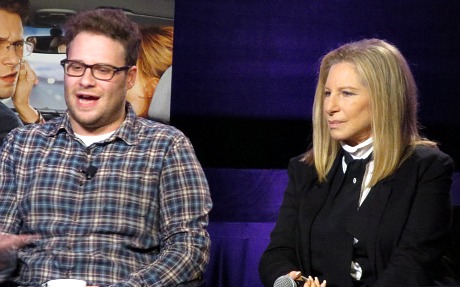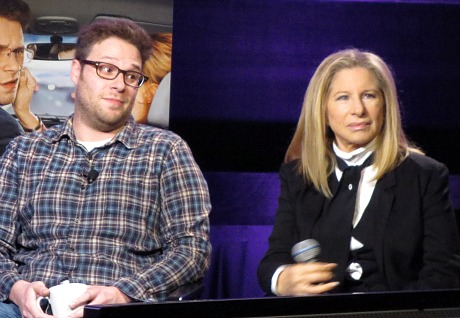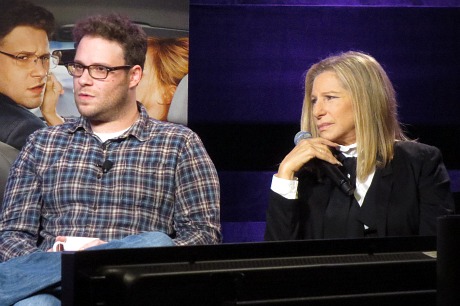You’ll get no argument from me about the New York Film Critics Circle giving Zero Dark Thirty their Best Picture award; ditto ZDT‘s Kathryn Bigelow winning Best Director. My support of ZDT (which I saw for the second time last night) is as ardent as my love affair with Silver Linings Playbook, and I’m delighted that all the lightweights who’ve been telling me ZDT is too cold and not audience-friendly enough are now going “hmmm, what are we not seeing….is it because we’re too shallow?”
On top of which I predicted the ZDT win four days ago.
There’s absolutely no basis for any complaint about Lincoln‘s Daniel Day Lewis winning the Best Actor trophy. I said from the beginning that despite that Matthew Modine-imitating-Walter Brennan voice, he nails Abe pretty damn well. And yes, I’m feeling a small measure of comfort from the fact that Lincoln has received no Best Picture momentum from this morning’s voting, and that Steven Spielberg wasn’t named Best Director.
Rachel Weisz winning the NYFCC’s Best Actress award for her tragic infidel performance in Deep Blue Sea is, I’m sorry, a seriously odd call. To paraphrase a Spencer Tracy line in Judgment at Nuremberg, “You’re going to have to explain why they gave this award to Rachel Weisz…you’re going to have to explain this very carefully.”
My own Weisz explanation: On its own terms Weisz’s performance in this murky, submerged drama is quite sad and affecting as far as it goes, but The Deep Blue Sea is something I just wanted to escape from. I’ve felt all along that Terrence Davies‘ film is far too dreary and fatalistic. It’s covered in a kind of amber, candle-lit ’50s murk, as if there wasn’t enough electricity to go around in post war Britain, and this seems to work as a visual metaphor for doldrums and social imprisonment. And the fact that Weisz’s character, a socially respectable married woman in her late 30s or early 40s, has an affair with an unstable military guy with a hair-trigger temper (Tom Hiddleston) lessens sympathy and compassion for her character as you ask yourself. “Why did this basically decent woman choose such a flaming asshole to have an affair with?” So it’s not a matter of Weisz not giving a highly commendable performance. She’s never not affecting or skillful. It’s the pathetic character she’s playing. A vote for a performance is never just a vote for a performance — you’re also voting for how much you identify with a character or recognize him/her in yourself. And so when I heard the news this morning it was like “what the eff?”
Sally Field winning for Best Supporting Actress seems like a huge slapdown for Les Miserables. The consensus over the last week and or so has been that no matter what happens to Tom Hooper‘s film award-wise or commercially, Anne Hathaway — who gives the one Les Miz performance that absolutely everyone has been knocked out by or at least greatly admires — will surely win Best Supporting Actress honors from critics and industry groups alike. But she didn’t today. That means something.
I’m figuring that the NYFCC reaction to Les Miz is so negative or mixed that the backwash surged into the room and drowned the Hathaway support in its crib. How else to explain the Field win? She was fine as the troubled Mary Todd Lincoln — angry, edgy, seething — but I didn’t come out of Lincoln going “holy bejeesus, Sally Field was really amazing!” I came out going “I have to admit that DDL really nailed it and so did Tommy Lee Jones.”
Hooray for Matthew McConaughey winning Best Supporting Actor for his performances in Magic Mike and Bernie.
Do I expect that Academy members will now open themselves up a bit more to Zero Dark Thirty or at least not be so quick to dismiss it? Naaah. They’re mules for the most part, and they’re gonna vote for the movies that talk to them and make them feel good, and to hell with the judgment of history. Do you think all the dead Academy members who voted for Around The World in Eighty Days as Best Picture in early ’57 care that this decision is now regarded as one of the most shameful in the history of world culture? Of couse not. They’re either floating around with angel wings in heaven or roasting on spits down in hell. Either way they don’t care. They can’t.
The bottom line is that the Academy Awards are all about serving the emotional needs and catering to the commercial interests of the community, or a lowest-common-denominator representation of same. And that’s why Silver Linings Playbook, which is easily as accomplished in its own way as Zero Dark Thirty or Lincoln or The Master or Les Miserables are in theirs, will surge with the HFPA and particularly with the Academy, as least as far as nominations are concerned. Oh, wait…it hasn’t taken off the way it should have with Joe & Jane Popcorn. I forgot about that.
SLP is the only Best Picture contender that makes you feel good if not euphoric at the end (unless, of course, you’re one of the haters), and is brilliantly doled out to boot.
Congrats also to Tony Kushner winning the Best Screenplay award for Lincoln, and to Amour for wining Best Foreign Language Film, and to Frankenweenie for winning the Best Animated Feature trophy, and to Greig Fraser for winning the Best Cinematography award for Zero Dark Thirty.







